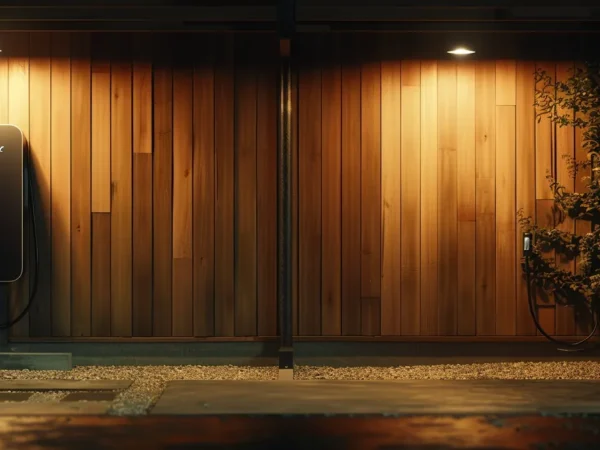Are you considering an electric vehicle and wondering about the home EV charging installation costs? Understanding the fee associated with a level 2 charger installation can make a significant difference in your budget. This guide will cover key aspects such as assessing your home’s electrical load, choosing the right EV charger, and the overall installation process. By engaging with this content, readers will gain clarity on what to expect, helping to alleviate concerns about unexpected costs and ensuring a smoother transition to electric vehicle ownership.
Key Takeaways
- Home EV charger installation costs vary based on charger type and electrical upgrades needed
- Level 2 chargers offer faster charging but require more investment than Level 1 chargers
- Assessing electrical panel capacity is crucial before installing an EV charger for compliance
- Government incentives can significantly reduce the costs of installing home EV charging stations
- Strategic charger placement can minimize installation expenses and enhance charging efficiency
Understanding Home EV Charging Installation Costs

Home EV charging installation costs are influenced by several key factors. This section explores the price associated with typical charging setups, including the impact of voltage requirements, and considerations for those using solar power. Additionally, the differences in costs between various charger levels will be examined, alongside the potential implications on home insurance coverage.
Key Factors That Influence Installation Expenses
The cost of installing a home electric car charger is influenced by several factors, including the type of charging station selected and the existing electrical infrastructure. Upgrading to a properly rated circuit breaker, required for higher voltage chargers, can significantly impact overall expenses. Additionally, for homeowners investing in sustainable energy solutions, such as solar power, there may be added costs associated with integrating the charging station into the solar system, but this promotes a more eco-friendly approach to energy consumption:
- Type of charging station (Level 1 vs. Level 2)
- Electrical system upgrades (including circuit breaker replacements)
- Compatibility with sustainable energy systems (like solar panels)
- Wiring and installation labor costs
- Potential impacts on property insurance policies
Typical Cost Breakdown of Home Charging Setups
The typical cost breakdown of home charging setups varies significantly depending on several factors, including the type of charging station installed and any necessary electrical upgrades. Homeowners can expect to spend anywhere from $500 to $2,000 for a Level 2 charging station, which is more efficient for electric vehicles compared to a Level 1 charger. Additionally, the incorporation of safety measures, such as updated circuit breakers, along with potential tax credits offered by the Internal Revenue Service, can provide financial benefits when assessing the overall home charging station cost. Connecting a home charging station to the utility grid may also affect ongoing electricity expenses, making it crucial for vehicle owners to evaluate their options carefully to find a balance between initial setup costs and long-term savings.
Comparing Costs Between Different Charger Levels
When comparing costs between different charger levels for home EV charging installations, it is essential to understand the distinctions between Level 1 and Level 2 chargers, as well as the newer direct current (DC) fast chargers. Level 1 chargers, typically utilizing standard household outlets, have a lower car charger installation cost but require significantly longer charging times for battery electric vehicles. Conversely, Level 2 chargers, which provide increased power through dedicated circuits, often lead to higher installation costs, such as the tesla home charger installation cost, yet deliver faster charging capabilities. Homeowners interested in integrating renewable energy sources might consider investing in Level 2 or DC fast chargers to maximize efficiency, despite the upfront expenses involved. Understanding these cost nuances helps vehicle owners make informed decisions aligned with their charging needs and budget considerations.
Understanding costs is just the beginning. Next, you must assess if your home can handle the power demands of electric vehicle charging.
Assessing Your Home’s Electrical Compatibility

Evaluating the electrical compatibility of a home is crucial for a successful EV charging installation. This section covers assessing the electrical panel capacity, which is essential for ensuring adequate power supply for the chosen charger, including the Tesla wall connector installation cost. It also addresses required electrical upgrades for optimal vehicle charging and navigating permits and local regulations to maximize available tax credits.
Evaluating Your Electrical Panel Capacity
Evaluating the electrical panel capacity is a crucial step in the EV charger installation process. Homeowners should consult a qualified electrician to assess whether their existing panel can handle the additional load of an electric car charger installation cost, which may necessitate an upgrade to ensure regulatory compliance. For those considering rebates or tax incentives, understanding the electrical needs and potential adjustments improves the chance of maximizing financial benefits while supporting a seamless charging experience.
| Evaluation Factor | Considerations | Potential Actions |
|---|---|---|
| Panel Capacity | Is the current panel rated for sufficient amperage? | Upgrade the panel if necessary. |
| Load Calculation | What is the total load of existing appliances? | Consult an electrician for a load analysis. |
| Regulatory Compliance | Are local codes met for installation? | Review local regulations and permit requirements. |
| Rebates and Tax Credits | What financial incentives are available? | Research available rebates and tax credits. |
Required Electrical Upgrades for EV Charging
Upgrading the home electrical system is essential for effective EV charging, especially when considering higher capacity chargers like the Tesla wall charger or a Level 3 charging station. Homeowners may need to increase their electrical panel capacity to accommodate these demands, which can affect the overall installation costs. By prioritizing these necessary upgrades, individuals not only enhance their charging capabilities but also contribute to long-term energy independence, enabling efficient charging of electric cars without compromising safety or performance.
Navigating Permits and Local Regulations
Navigating permits and local regulations is crucial for a successful home EV charging installation. Homeowners must check with their local building authority to determine required permits, which can vary significantly by location and may influence installation costs. Failure to adhere to regulations can increase risk, potentially jeopardizing warranties on equipment and creating issues for future home improvement projects; understanding these requirements helps customers avoid unnecessary complications and ensures that their electrical systems are compliant and safe.
Having assessed your home’s electrical setup, it’s time to focus on what type of EV charger fits your needs. The right choice will power your vehicle and enhance your home’s efficiency.
Choosing the Right EV Charger for Your Home
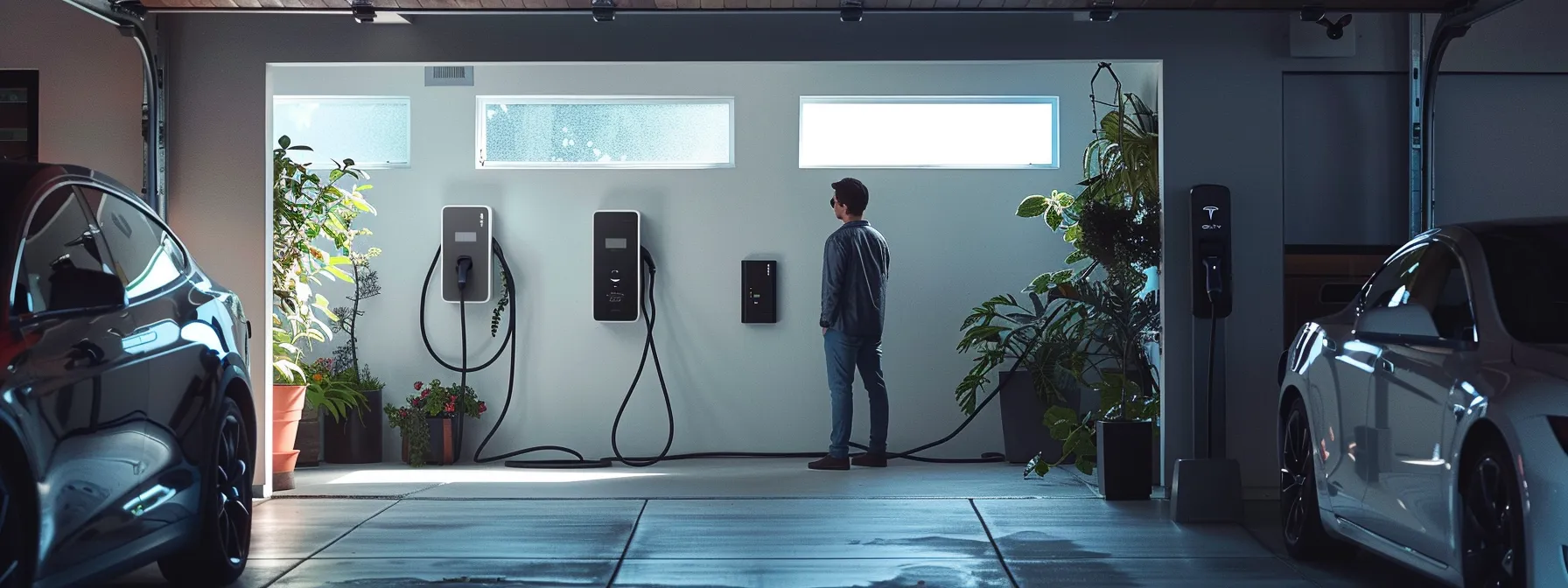
When selecting an EV charger for home use, understanding the differences between Level 1 and Level 2 chargers is essential. Key features to consider include compatibility with the North American charging standard and the need for appropriate electrical wiring. Homeowners must balance the tesla charger installation cost against charging efficiency to ensure they make an informed decision. The following sections will provide practical insights for selecting the right charger with input from an experienced ev electrician.
Differences Between Level 1 and Level 2 Chargers
Level 1 and Level 2 chargers serve distinct purposes in home EV charging setups, each with unique features that impact installation costs and efficiency. Level 1 chargers plug into standard household outlets, making them cost-effective but slower, often requiring overnight charging to fully charge an electric vehicle. In contrast, Level 2 chargers require a dedicated circuit and provide faster charging capabilities, significantly reducing wait times and making them a suitable choice for daily use, albeit with higher installation costs due to the necessary electrical upgrades.
Features to Consider When Selecting a Charger
When selecting an EV charger for home use, homeowners should consider several critical features to ensure optimal performance and compatibility with their electric vehicle. Understanding the differences in charging speeds between Level 1 and Level 2 chargers is essential, as a Level 2 charger can significantly reduce charging time and improve convenience for daily use. Additionally, assessing compatibility with existing electrical systems and the potential for future upgrades can help alleviate any additional costs associated with installation and ensure that the charger meets both current and future needs.
Balancing Cost and Charging Efficiency
Balancing cost and charging efficiency is essential for homeowners considering EV charger installations. While the initial expense of a Level 2 charger may be higher compared to a Level 1 model, the increased charging speed often justifies the investment, as it can save significant time and reduce reliance on public charging stations. Homeowners should assess their daily driving habits and evaluate how a faster charger can enhance convenience and efficiency while aligning with their budgetary considerations, ultimately leading to a more satisfying electric vehicle ownership experience.
Now that the right EV charger is selected, the next step is crucial. A professional installation ensures safety and efficiency, paving the way for a seamless charging experience.
Professional Installation Process Explained
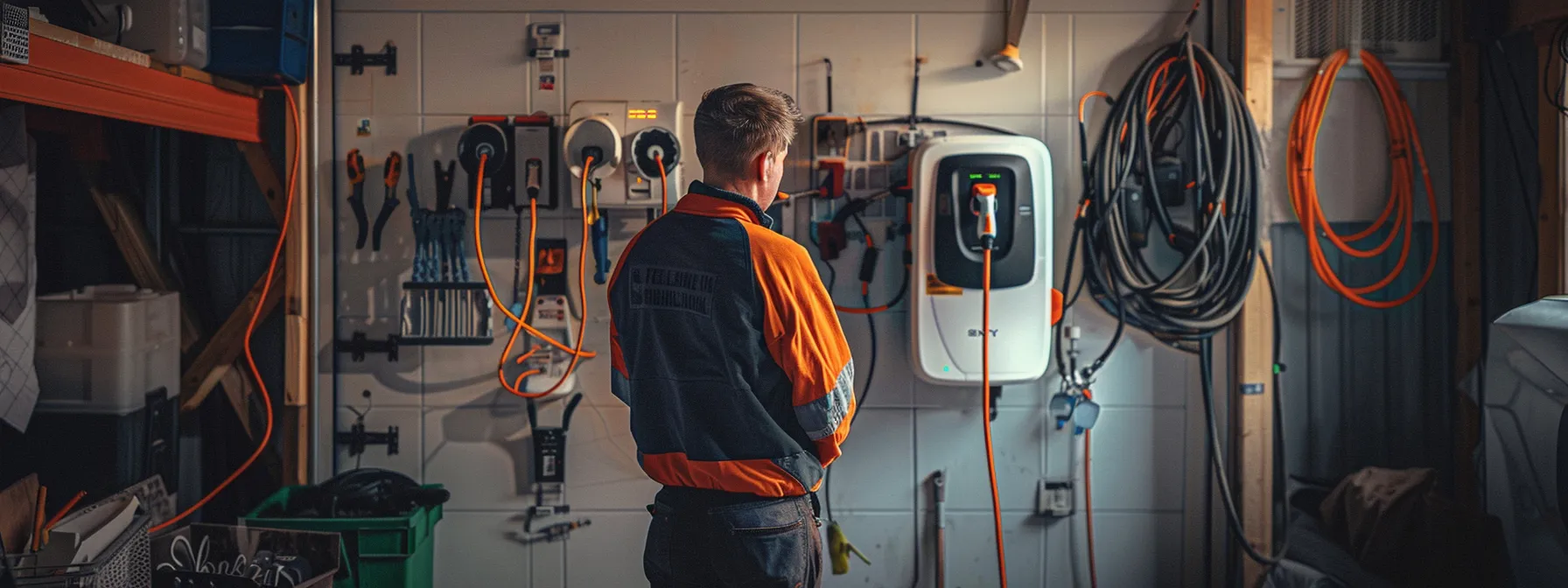
The professional installation process for home EV chargers involves several critical steps. This includes assessing the property for necessary upgrades, selecting the appropriate charger, and ensuring compliance with local regulations. Hiring qualified electricians is vital for a safe setup, and understanding timeframes and estimated labor costs helps homeowners plan effectively. Each of these components contributes to a successful installation experience.
Steps Involved in Installing a Home EV Charger
The installation of a home EV charger begins with a thorough assessment of the property to identify any necessary electrical upgrades. A qualified electrician evaluates the existing electrical panel and wiring to ensure that they can accommodate the additional load from the EV charger. After selecting the appropriate charger model based on the homeowner’s requirements, the electrician then ensures compliance with local regulations and secures any needed permits before proceeding with the physical installation work.
| Step | Description | Considerations |
|---|---|---|
| Assessment | Evaluate existing electrical system and capacity. | Confirm compatibility with EV charger specifications. |
| Selection | Choose the right type of EV charger. | Consider charging needs and installation costs. |
| Compliance | Review local building codes and obtain permits. | Ensure installation adheres to safety regulations. |
| Installation | Carry out the physical installation of the charger. | Test the system for functionality and safety. |
Hiring Qualified Electricians for the Job
Hiring qualified electricians is crucial for ensuring a safe and efficient installation of home EV chargers. Professionals bring expertise in assessing the existing electrical infrastructure, determining necessary upgrades, and adhering to local regulations and building codes. This not only minimizes the risk of installation errors but also helps homeowners navigate potential challenges, providing peace of mind and allowing them to maximize the benefits of their EV charging systems.
Timeframes and Labor Costs to Expect
The timeframe and labor costs associated with the installation of a home EV charger can vary based on several factors, including the complexity of the job and the specific requirements for electrical upgrades. Typically, installation may take between four to six hours, with labor costs ranging from $50 to $100 per hour, depending on the electrician‘s expertise and the region’s rates. Homeowners should consider these factors when budgeting, ensuring they choose a qualified electrician who can provide a comprehensive estimate based on their individual situation:
| Cost Factor | Details | Estimated Cost |
|---|---|---|
| Labor Charges | Hourly rate for electricians. | $50 – $100 per hour |
| Installation Time | Total hours for installation process. | 4 – 6 hours |
| Additional Upgrades | Cost of any electrical upgrades needed. | Varies by project |
| Permit Fees | Local permit costs, if required. | Varies by location |
Installing a system is just the beginning. Next, it’s essential to consider the additional costs that come with it.
Exploring Additional Costs and Considerations
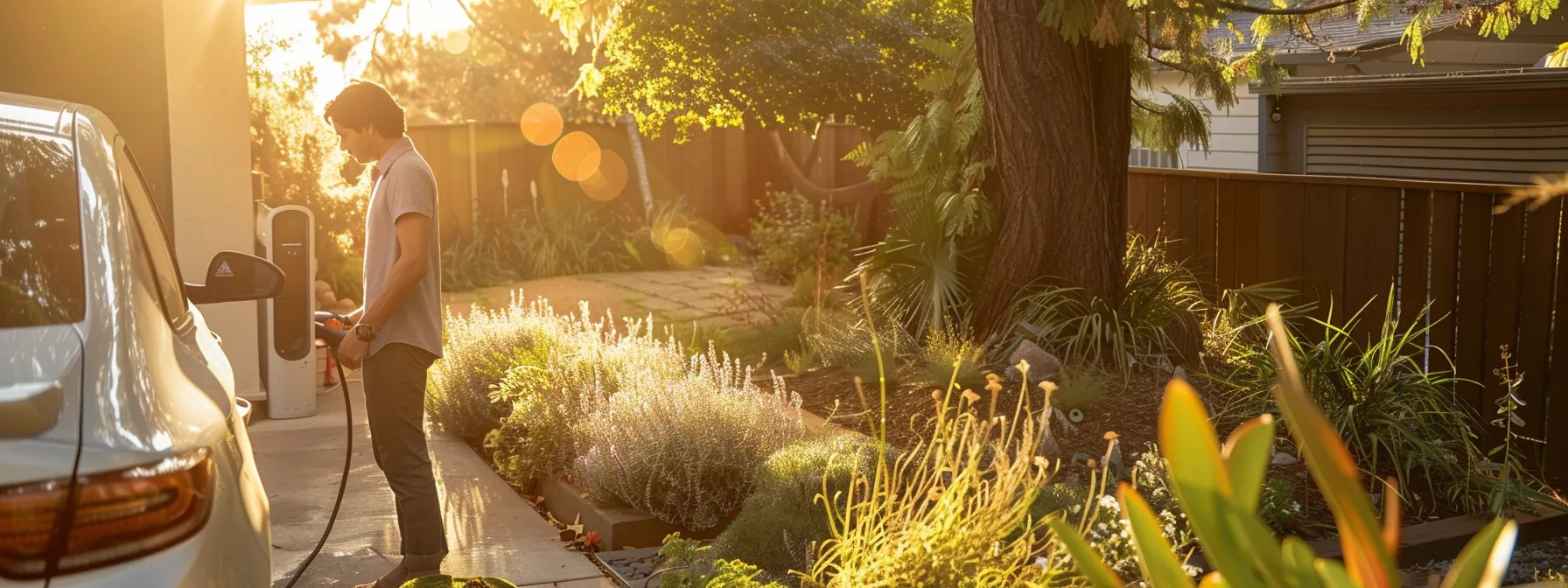
Exploring Additional Costs and Considerations
Homeowners should be aware of potential hidden expenses when installing an EV charging station, including unexpected site-specific costs. Maintenance and upkeep of home chargers also represent ongoing financial responsibilities. Furthermore, the placement of the charger can significantly impact installation costs, making strategic planning essential for overall budgeting.
Potential Hidden Expenses to Anticipate
Homeowners considering an EV charging installation should be aware of potential hidden expenses that may arise during the process. These can include site-specific costs such as excavation for wiring, unexpected electrical panel upgrades, or necessary modifications to the existing infrastructure. Planning for these additional expenses ensures that the overall budget remains realistic and that no surprises derail the installation process:
| Hidden Expense | Description | Potential Cost |
|---|---|---|
| Site Preparation | Excavation or landscaping work required. | Variable, based on site conditions |
| Electrical Upgrades | Upgrading the panel or wiring to meet new requirements. | $500 – $2,000 |
| Permit Fees | Costs associated with local permits and inspections. | Varies by location |
| Charger Placement | Additional costs for distance from the electrical panel. | Variable, depending on setup |
Maintenance and Upkeep Costs of Home Chargers
Maintenance and upkeep costs of home chargers can vary, but homeowners should budget for regular inspections and potential repairs to ensure optimal performance. Simple tasks such as keeping the charging area clean and checking for wear on connectors can help extend the lifespan of the equipment. Investing in these routine maintenance practices can prevent larger issues down the line, making it essential for homeowners to be proactive about their EV charging station‘s care:
- Regular inspections of the charging equipment
- Keeping the charging area free of debris and moisture
- Checking connectors for wear and securing them properly
- Budgeting for potential repairs or upgrades as needed
Impact of Charger Placement on Installation Costs
The placement of an EV charger significantly influences overall installation costs. Factors such as the distance from the electrical panel to the charging location can lead to increased wiring and labor expenses. If the charger is installed far from the main panel, additional materials and labor are needed to run the necessary electrical circuits, potentially raising the total cost of installation. Planning the charger placement strategically can mitigate these expenses and enhance the efficiency of the charging setup:
| Placement Factor | Consideration | Potential Cost Impact |
|---|---|---|
| Distance from Electrical Panel | Further distance requires longer wiring. | +$100 – $500 depending on length |
| Accessibility | Charger location affects ease of use. | Variable, based on convenience |
| Location Choice | Indoor vs. outdoor placement considerations. | Possible additional weatherproofing costs |
Installation costs can add up quickly, but there are ways to keep them in check. Next, discover some effective tips to reduce your expenses and make the process smoother.
Tips to Minimize Your Installation Expenses
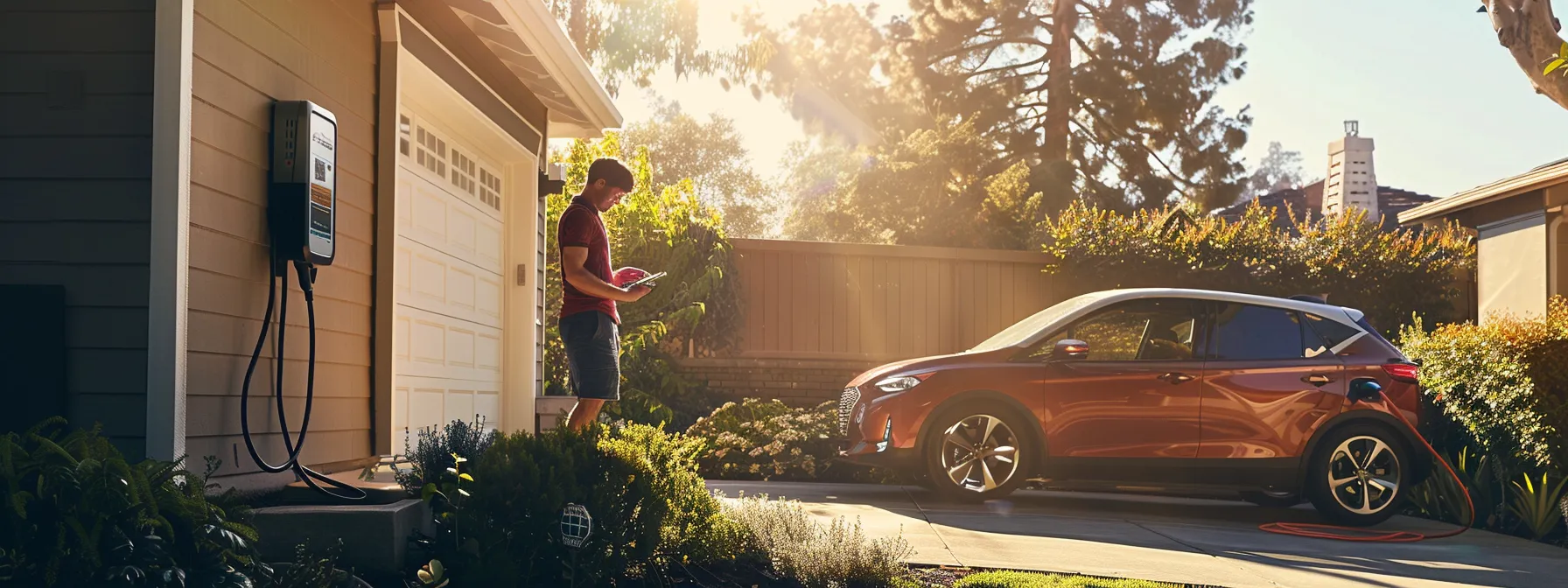
Homeowners can minimize installation expenses for EV chargers through various strategies. Taking advantage of government incentives may lower upfront costs significantly. Additionally, implementing cost-reduction strategies, such as optimizing charger placement and selecting the right equipment, is essential. Calculating potential long-term savings from home charging further highlights the financial benefit of investing in an EV charging system, making informed decisions simpler.
Taking Advantage of Government Incentives
Homeowners can significantly reduce their EV charging installation costs by taking advantage of available government incentives. Many local, state, and federal programs offer rebates or tax credits for purchasing and installing electric vehicle chargers, making these systems more affordable. For instance, programs may cover a portion of the installation expenses or provide financial support for necessary electrical upgrades, encouraging the adoption of environmentally friendly technologies while easing the financial burden on homeowners.
Strategies for Reducing Installation Costs
Homeowners can significantly lower their EV charging installation costs by carefully planning the installation process. One effective strategy is to conduct a thorough assessment of the existing electrical infrastructure before beginning the project, allowing for the identification of necessary upgrades that could impact costs. Additionally, considering the placement of the charger close to the electrical panel can reduce wiring expenses and labor time, leading to overall savings while ensuring efficient charging for electric vehicles.
Calculating Long-Term Savings From Home Charging
Calculating long-term savings from home charging is essential for homeowners considering the installation of EV chargers. By analyzing energy costs and subtracting the expenses associated with public charging stations, individuals can determine the financial benefits of home charging. For instance, utilizing off-peak electricity rates for charging can further reduce costs, allowing homeowners to save significantly over time:
| Cost Factor | Details | Estimated Savings |
|---|---|---|
| Home Charging Costs | Average monthly electricity cost for charging at home. | $30 – $60 |
| Public Charging Costs | Average monthly cost if relying on public charging stations. | $80 – $150 |
| Annual Savings | Difference in overall cost between home and public charging. | $600 – $1,440 |
Conclusion
Understanding the costs associated with home EV charging installations is crucial for making informed decisions that balance efficiency and budget. Homeowners must consider various factors, including charger types, electrical upgrades, and potential hidden expenses, to ensure a successful setup. Additionally, leveraging government incentives and strategic planning can significantly reduce upfront costs while maximizing long-term savings from home charging. By equipping themselves with this knowledge, individuals can confidently navigate the complexities of EV charging installations, enhancing both convenience and sustainability in their daily lives.

